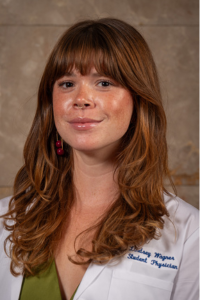Women in Medicine: A Retrospective
Published September 16, 2025
Inside OME

By Lindsey Wagner, OMS I, Touro College of Osteopathic Medicine - Harlem
Entering the first year of medical school, you are inundated with a breadth and depth of information that, in its infamy, is compared to “being thirsty and attempting to drink from a fire hydrant.” Synthesizing so much material leaves a narrow margin for interrogating how it migrated from microscope slides to the Microsoft Slideshows of your lecture halls, and who contributed to the foundations of medicine and its advancement. Many people, when asked to conjure up images of scientists, doctors and researchers, picture male figures. In reality, many of the scientific contributions and medical advancements we recognize today have been driven by women, yet their names have remained at the periphery of conversations or are shared as fleeting factoids rather than garnering the accolades and credit that so many of their male peers have collected.
September, marked Women in Medicine Month, is a time to direct our attention to the countless women who have painstakingly dedicated their professional lives, and in some cases their bodies (non consensually), to the practice and advancement of medicine and scientific research. This month, we recognize the major contributions women have made to science and medicine, long before they were welcomed, honored, licensed or legitimized by our formal institutions and peers. Evidence of women practicing and advancing medicine can be traced from ancient Egypt to the early foundations of midwifery to the women who helped develop hygiene practices during the Revolutionary War, to the leaders of today. Women have continued, despite marginalization, to guide medicine toward inclusion and advancement.
This, of course, is not without significant challenges, constraints or retribution. It was not until 1894 (though women were a part of the first class of osteopathic medicine in 1892) that women were licensed as medical doctors, while the National Institutes of Health did not mandate that women be included as clinical trial subjects until 1993. Patient care limitations exist, too. Recent coverage shows that 49 percent of women report intense pain at IUD placement, yet pain management guidelines were only just introduced in May 2025. Whether as patients, practitioners or clinical participants, women (and non-binary folks) have been subjected to medical harm and professional limitations in disproportionate numbers compared to their male-identifying counterparts. Yet the thrum of our persistent achievements remains steady.
With that, I draw attention towards only a few landmark advances, like Elizabeth Blackwell, who was the first woman to receive a medical degree in the United States, and Patricia Bath, the first black woman to receive a medical patent for the invention of a probe used in cataract surgery. There was also Rosalind Franklin, whose X-ray research was indispensable in modeling the DNA double helix.
Reflexive as the nod is to these women of science and medicine, many more have not received even this level of recognition. So this September, for Women in Medicine Month, I extend and expand the scope to include a few more additions. This includes women like Henrietta Lacks, whose HeLa cells, collected without consent or compensation, were cornerstones to the treatment and prevention of many cancers and diseases of today. In addition, many of the gynecological procedures and diagnostic approaches taught and used today were developed as a result of unimaginable physical violence to slave women’s bodies, without consent or anesthesia. These women were deprived of dignified care and bodily autonomy. It is important to remember the suffering that contributed to the many standards of care we rely on today. Medical progress has neither been linear nor devoid of exploitation, conflict or violence, and women’s experiences often live contained in the boundaries and intersections of our medical ethics class discussions.
As a student physician trained with the tenets of osteopathic medicine, I am primed to recognize the interrelatedness of systems, how dysfunction manifests and the subsequent compensations made as a result of an imbalance, internal or external. In this framework of thinking, this interconnectedness can easily be mapped on a societal level, understanding how across communities, families and individuals, we are trying to maintain an equilibrium in the public and private spheres we occupy. Both in science and society, women are crucial in facilitating this oscillating balance. Whether patients, practitioners or researchers, women remain critical to the infrastructure and advancement of medicine, from the past, the current moment and the future.
By showcasing just a fraction of these contributions to medicine and science, we, too, as physicians, become better prepared to integrate a more comprehensive, socially conscious understanding of medicine as we train and practice our work. What remains clear is whether viewing medicine contemporaneously or not: Women have always been a central part of its sustained practice. Women (and non-binary) medical professionals have always been present, enriching the textures and dynamics of the field, from studying in the very first class of osteopathic medical students to advancing medical technologies, formalizing the standards of hygiene and addressing disparities in access to care. By emphasizing the leaders of our past, we are better equipped to support those training today, and to expand the current landscape of medicine going forward.
